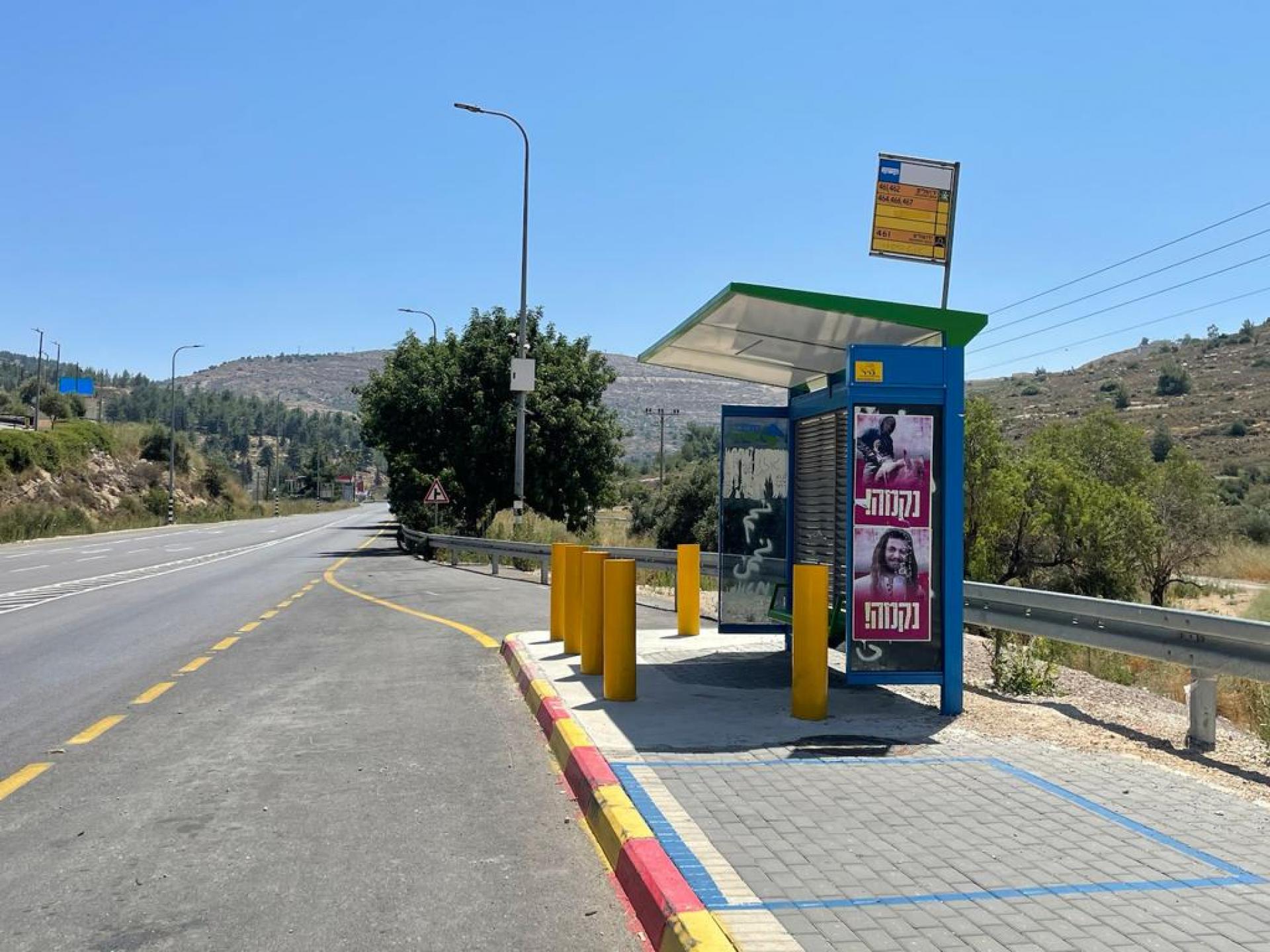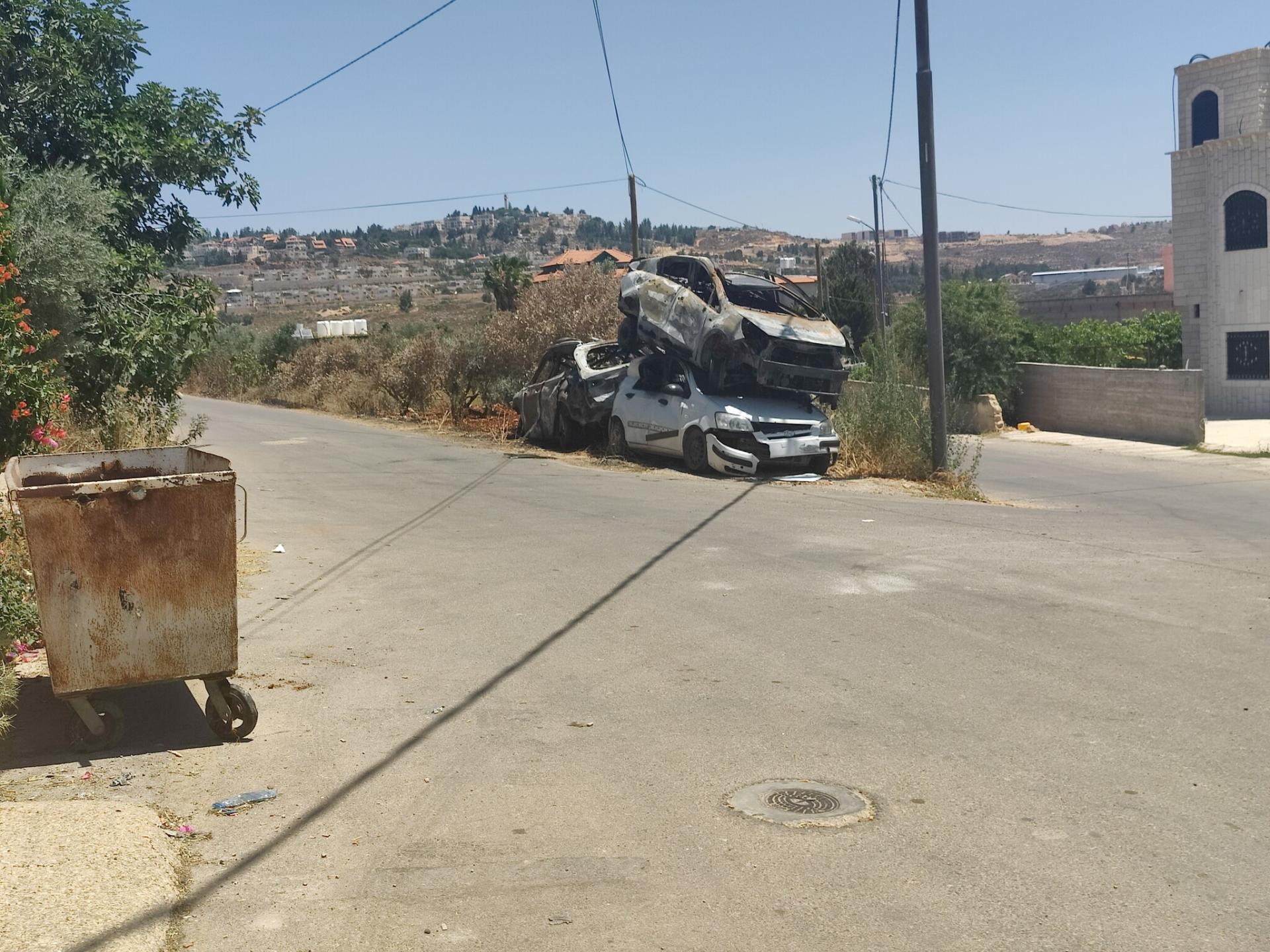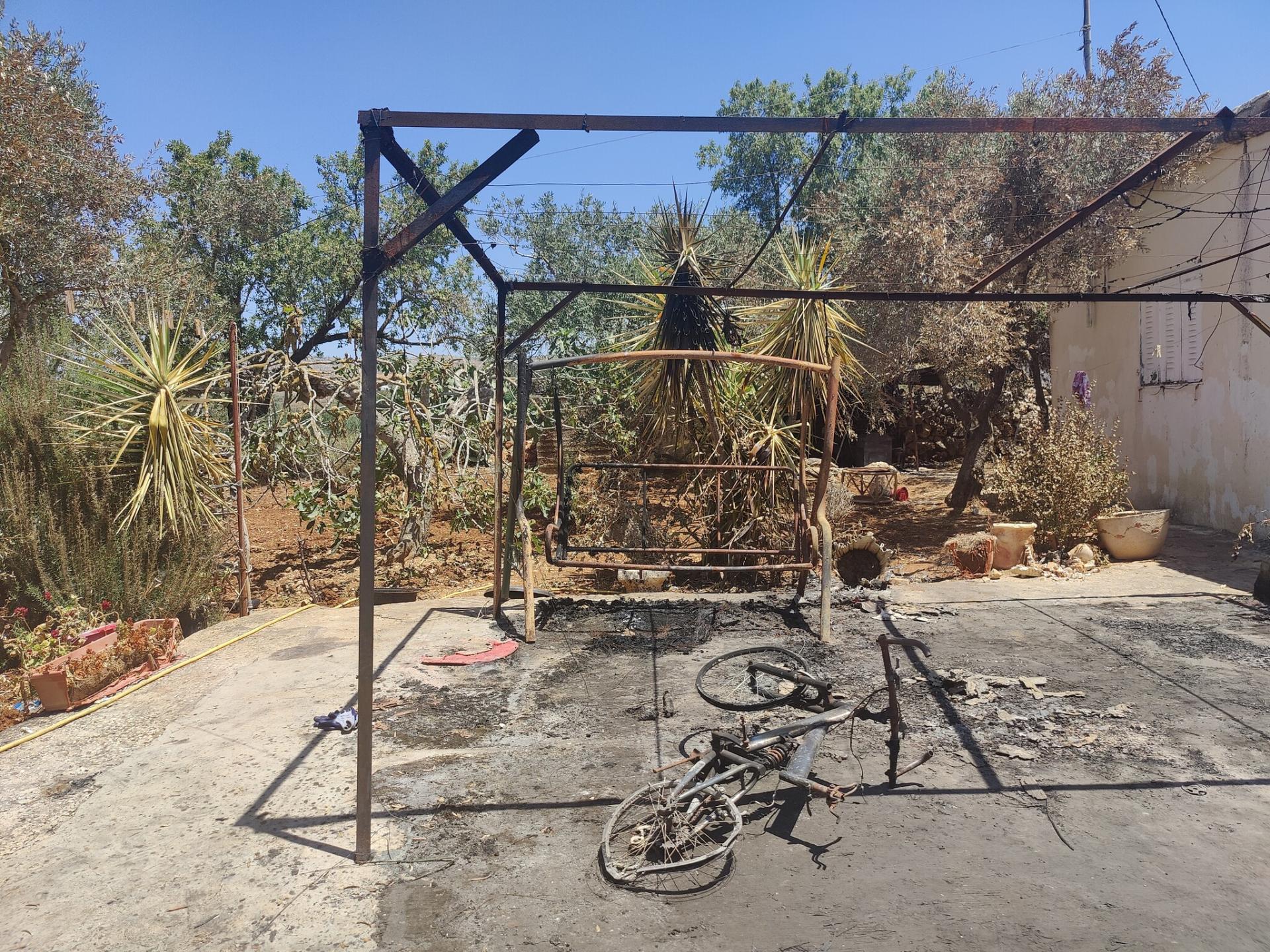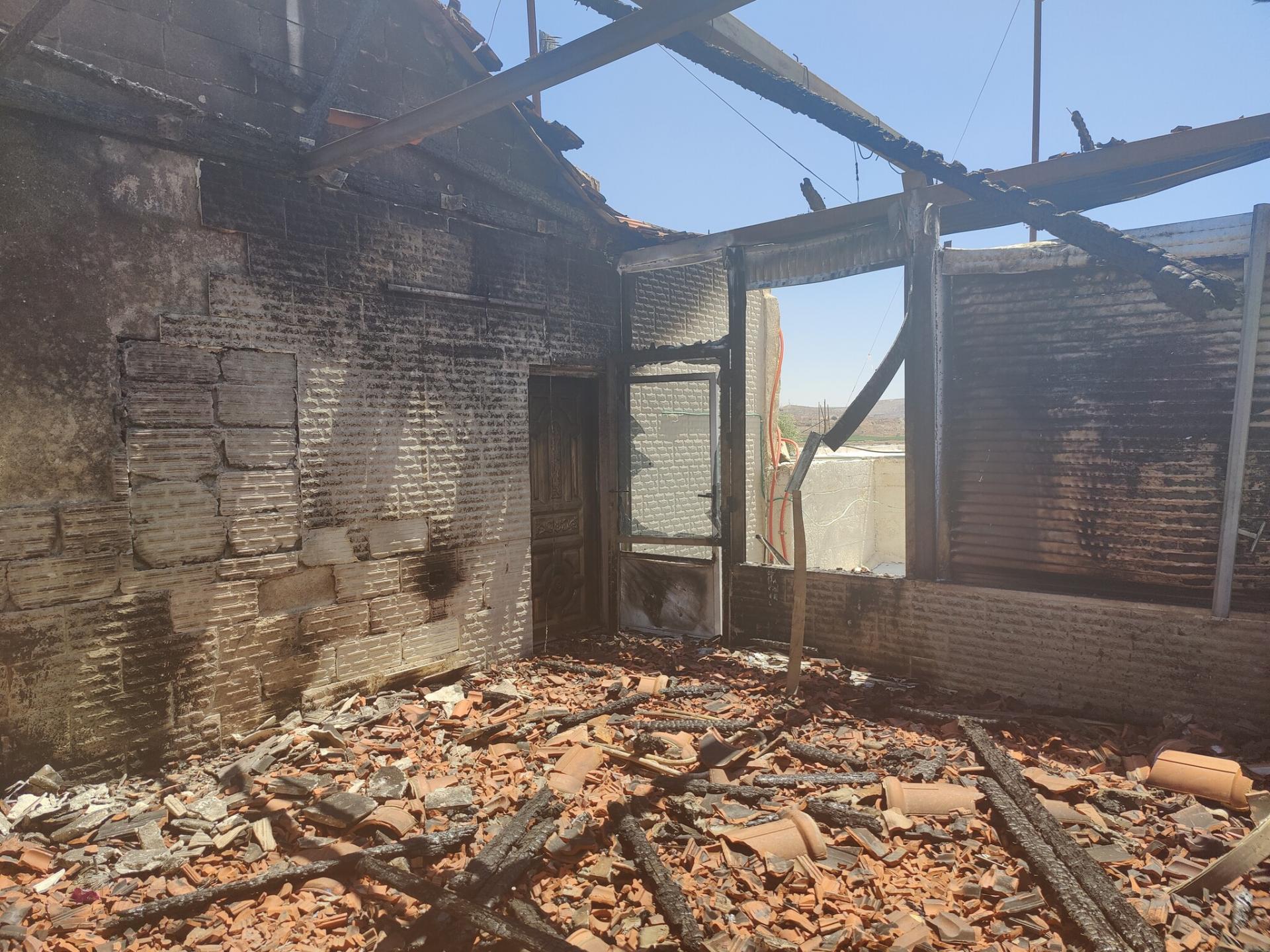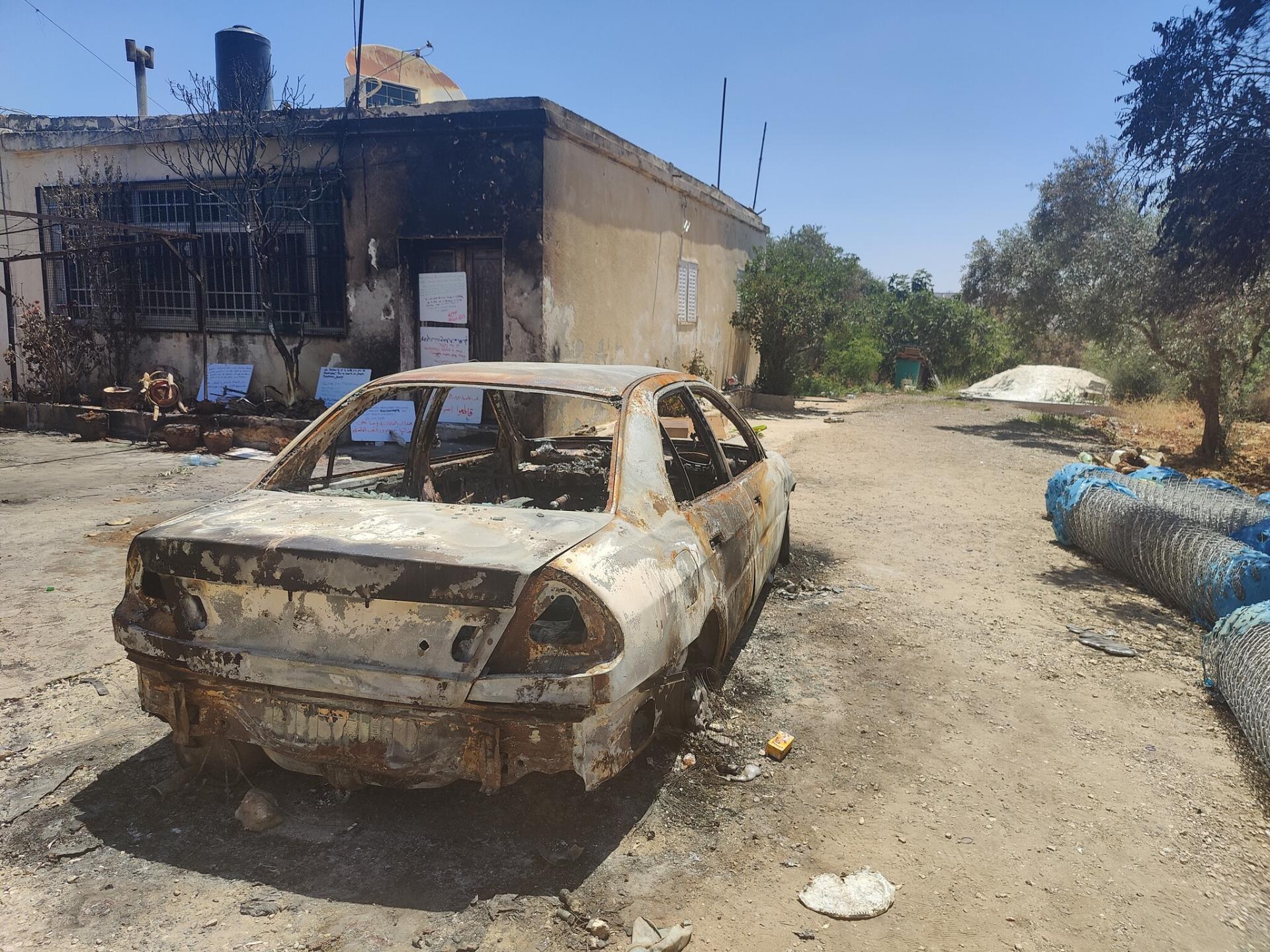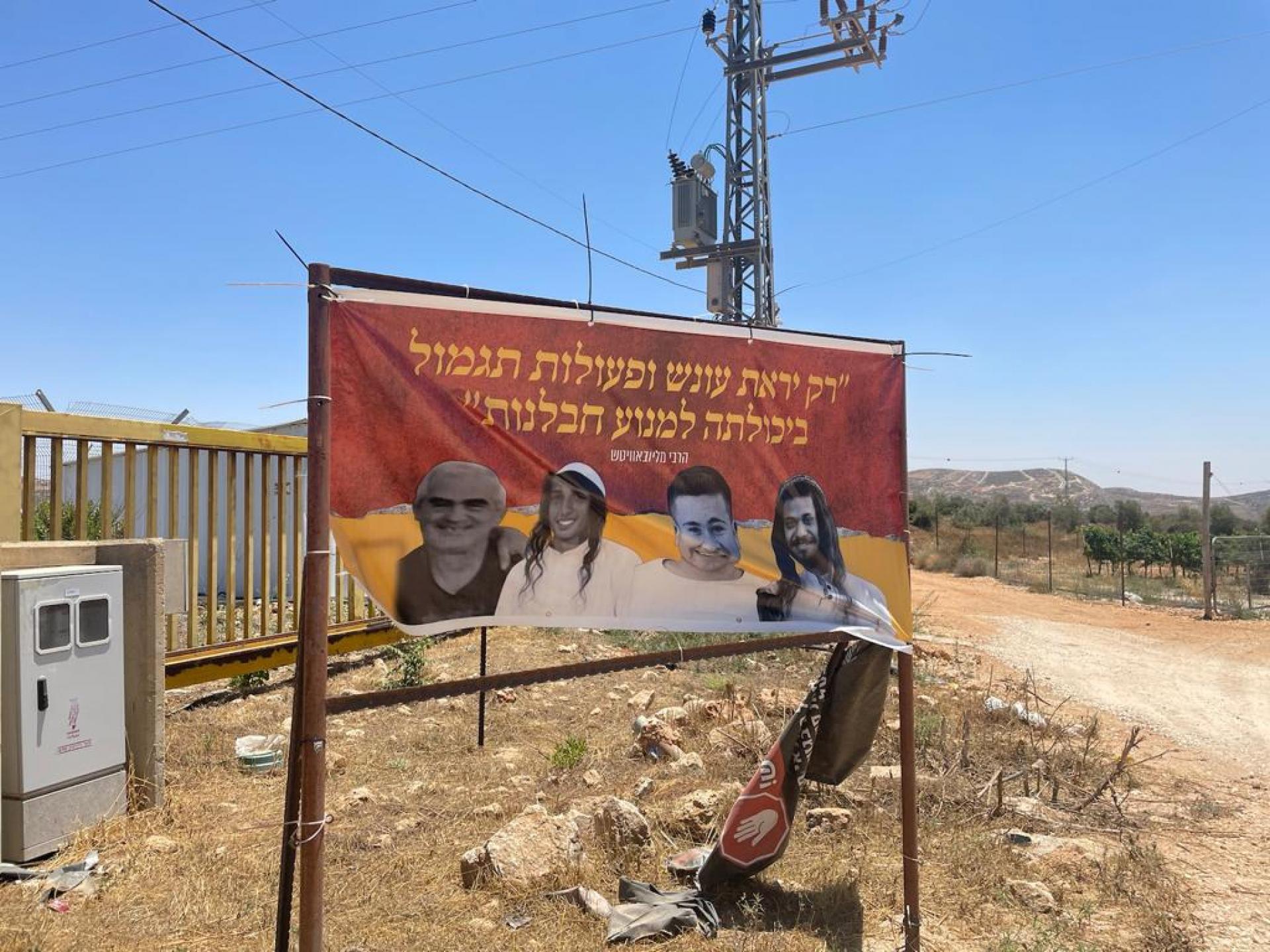Turmus Aya, five days after the pogrom

Revenge! cry out criminal posters at every bus stop. It’s a summons and license to harm innocent Palestinians who are attacked and robbed day after day. Not only is their land and liberty assaulted – their spirit, for who wishes to live such a life…
It’s the eve of Eid Al Adha today (the holiday of sacrifice), five days after the horrible pogrom at Turmus Aya village. Road 60 (“The apartheid road”) from Issawiya to Sinjil is blocked to Palestinian traffic. At the entrance to the village trying to recover, an army checkpoint denies the villagers their right to enter or exit. Naturally there is no closure at the colonies. The criminals are free. Not a single criminal is arrested. We saw some of them buddying up with soldiers standing at the temporary Sinjil checkpoint. Sure, the Israeli army supports and encourages them, whereas the victims stand in a long line in the seething heat, hoping that at some point they will be permitted to live. It’s the eve of a holiday, there are chores to complete, shopping to be done etc., but the villagers are locked down inside their village after the trauma they had undergone.
at the colonies. The criminals are free. Not a single criminal is arrested. We saw some of them buddying up with soldiers standing at the temporary Sinjil checkpoint. Sure, the Israeli army supports and encourages them, whereas the victims stand in a long line in the seething heat, hoping that at some point they will be permitted to live. It’s the eve of a holiday, there are chores to complete, shopping to be done etc., but the villagers are locked down inside their village after the trauma they had undergone.
Under the racist apartheid regime, we Jews were naturally allowed to enter Turmus Aya. We came to set a new appointment for Maryam of Fasail at the eye local eye hospital. She had canceled her previous appointment because of her fear of the pogroms. Understandably we were met with suspecting, even hostile looks – 2 Jewish women… But in less than ten minutes the few people outdoors began to thaw and tell us their stories. One of them told us how they were locked into their house – 30 people, including 20 children and 5 women, while the colonists were setting the house on fire outside. Others told us about their moments of chilling anxiety and helplessness, about soldiers shooting live ammunition and killing Omar Abu Kattan. A cab driver at the entrance to the village agreed to take us to see the shocking sights. Nearly in front of every house is a black rectangle – attesting to the vehicle that stood there and was set ablaze. We saw seven totally incinerated houses, whose inhabitants will have to crowd during the holiday in homes of people who agreed to host them. Other homes were partially burnt and are already being restored. 30 vehicles were completely incinerated, whole fruit tree groves were set on fire, and the picture of the fallen Omar Abu Kattan appears on every house-fence. We wanted to bury ourselves with shame and pain…
We drove along the road connecting the Allon Road with Road 60. It is an apartheid road for Jews only. It is entered through a gate guarded who opens it only for those allowed to travel along it. The road passes by countless colonies and outposts: Eli, Shilo, Shvut Rachel, Esh Kodesh, Kida, Ge’ulat Zion, Adi and others. The main gate sports a giant poster calling for Revenge!
A Rashash – this is the encampment we used to visit until two years ago, struggling with the villagers for their right to livelihood and to water their flocks at the Ein Rashash spring. Two years ago, the shepherds gave up and began to graze their flocks close to home. Now they feed their sheep and goats with expensive purchased barley, not natural grass. How long will this last? Two days ago, at nighttime colonists came to the encampment and damaged the sheep pen and a resident shanty, terrorizing the local people. This is the real terrorism in the region. Would the Israeli army do all it can to subdue it? Demolish the infrastructures of Jewish terrorists? We were told that several sheep belonging to the shepherd who lives near the entrance to Douma village were killed on the pogrom night in Turmus Aya.
The next day, Rabbi Arik Asherman came to sleep over in the encampment in order to shield its inhabitants. That night was quiet.

